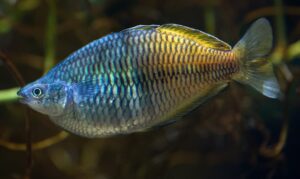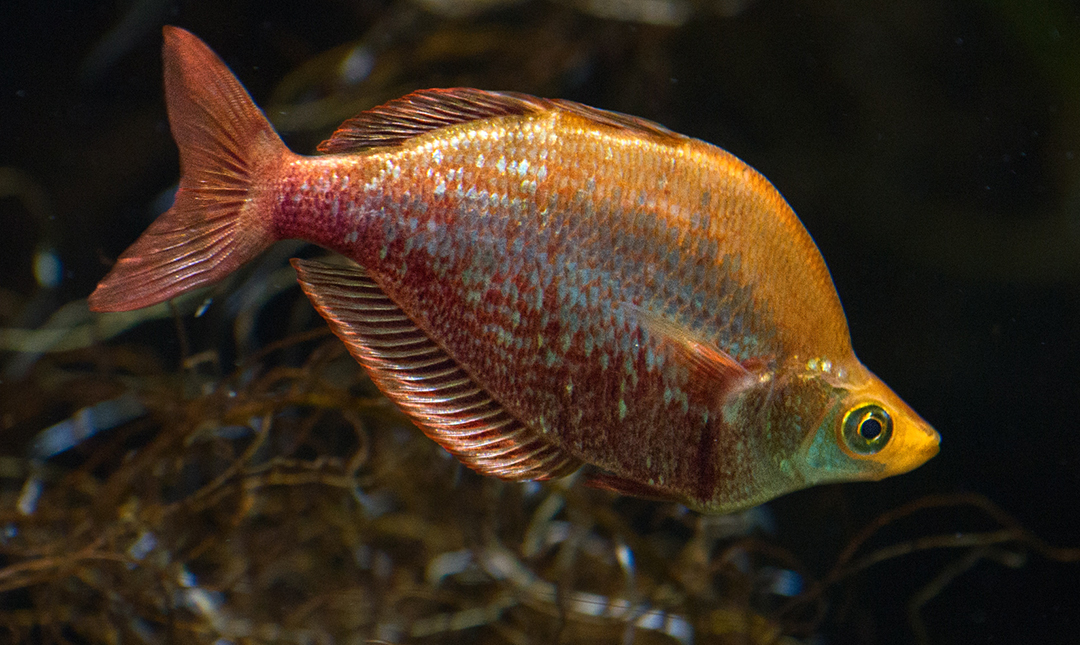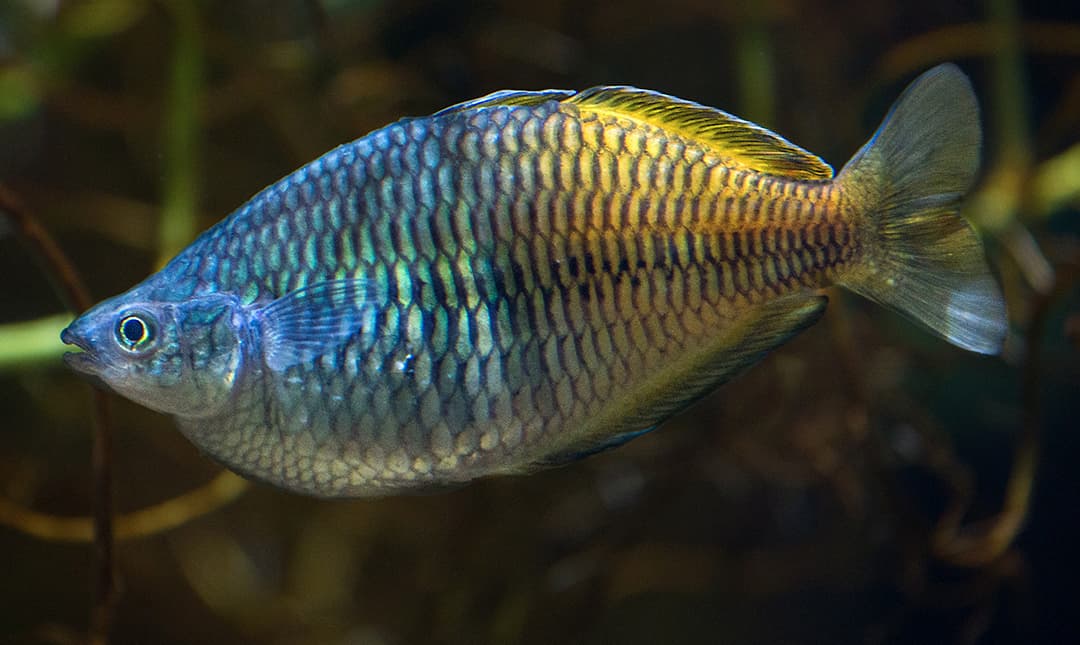About
Rainbowfish are named for the iridescent colors that refract from their scales. Native to Australia, Papua New Guinea, and parts of Indonesia, populations of rainbowfish are found in almost every river system, each with its own distinctive body color and pattern. Coloration can also vary based on the mood of the fish, water conditions, and diet. Males are slightly larger and more colorful, especially when they feel stressed or when competing for the attention of a female. Females and juveniles are plain silver and only faintly colored. Decorative fin-dots in shades of red, yellow, and black are thought to play a role in courtship.
Rainbowfish typically live in schools of six or more. They take cover in aquatic vegetation near riverbanks. Overlapping scales protect their bodies and reduce friction in the water. A sensory lateral line that runs the length of their bodies detects movement in the surrounding water.
All freshwater fish are threatened by climate change, water pollution, introduction of invasive species, and illegal collection for the pet trade.
The Zoo is home to several species of rainbowfish with different IUCN statuses, including:
- red rainbowfish – Endangered
- Tami River rainbowfish – Vulnerable
- Lake Wanam rainbowfish – Critically Endangered
- Boeseman’s rainbowfish – Endangered
- Australian rainbowfish – Least Concern


Habitat
These freshwater fish live in streams, rivers, and lakes in Australia and New Guinea.
Diet
Omnivorous, these fish eat algae, insects, microcrustaceans, and other small invertebrates.
Physical Characteristics
Rainbowfish are typically 3 to 5 inches long. Males are a bit wider with fuller humps on their backs and longer fins. Lifespan in the wild in unknown, but in human care they live 5 to 8 years.
LOCATION WITHIN THE ZOO
You’ll find rainbowfish in the aquarium at the LAIR. See Zoo Map.



